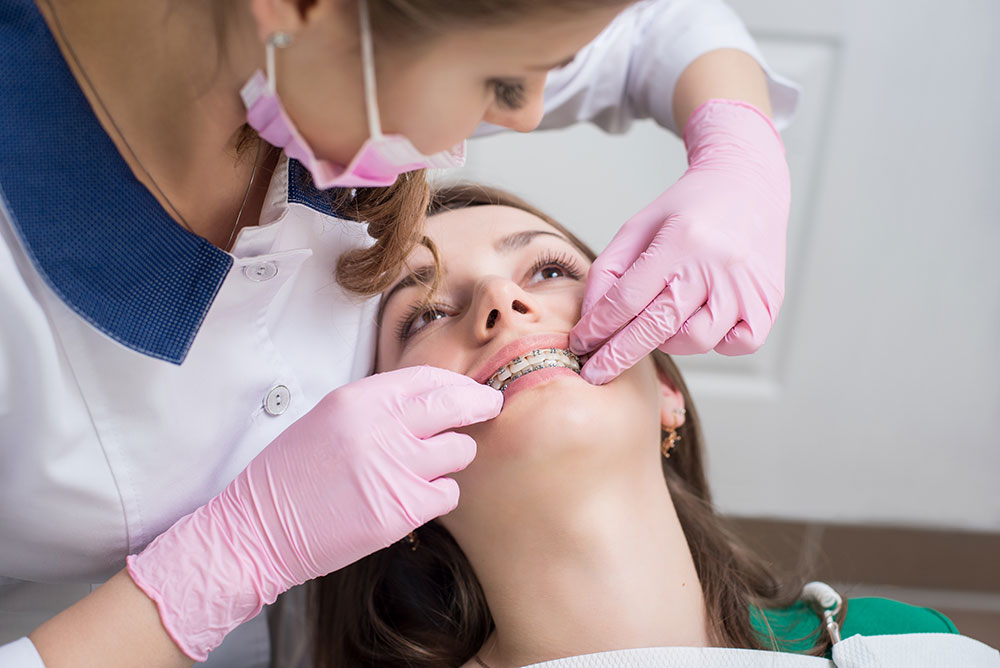The Of Legacy Orthodontics
Table of ContentsLegacy Orthodontics Can Be Fun For AnyoneThe Ultimate Guide To Legacy OrthodonticsLegacy Orthodontics Can Be Fun For EveryoneLegacy Orthodontics Things To Know Before You Get ThisLegacy Orthodontics Things To Know Before You Get This
In enhancement, we use adjustable therapy schedules, versatile payment options and an enjoyable, enjoyable experience.An orthodontist is a dental practitioner educated to detect, avoid, and treat teeth and jaw abnormalities. Orthodontists work with individuals of all ages, from youngsters to adults.
Malocclusion, or misaligned teeth, can cause dental concerns, including tooth decay, periodontal disease, and hard or unpleasant chewing. Not everybody is born with straight teeth. If you have a bad bite or huge areas between your teeth, you may wish to speak with a dental professional specializing in orthodontic care.
Legacy Orthodontics Things To Know Before You Get This
( Image Credit History: DigitalVision/Getty Images) Orthodontists make use of fixed and detachable dental gadgets, like dental braces, retainers, and bands, to change the setting of teeth in your mouth. Orthodontic treatment is for dental abnormalities, including: Uneven teethBite issues, like an overbite or an underbiteCrowded teeth or teeth that are also much apartJaw misalignmentThe objective of orthodontic treatment is to boost your bite.
While you may think of orthodontists as mainly for youngsters or teenagers who require dental braces, they can correct dental troubles at any age. Orthodontists attend university, dental institution, and orthodontic school.
All orthodontists are dental professionals, yet not all dentists are orthodontists. Orthodontic residency programs offer extensive, concentrated instruction for dental specialists. They concentrate on two areas: How to properly and securely move teeth How to correctly assist advancement in the teeth, jaw, and faceOnce an orthodontist has finished training, they have the alternative to become board accredited.
The Only Guide for Legacy Orthodontics
Misalignment, or malocclusion, is one of the most common factor people see an orthodontist. It is genetic and is the outcome of size distinctions in between the upper and reduced jaw or in between the jaw and teeth. Malocclusion brings about tooth overcrowding, an irregular jaw, or uneven bite patterns. Malocclusion is normally treated with: Your orthodontist attaches metal, ceramic, or plastic square bonds to your teeth.
If you have just minor malocclusion, you may have the ability to use clear dental braces, called aligners, as opposed to conventional dental braces (https://pagespeed.web.dev/analysis/https-www-legacyortho-com/fjbdpbv998?form_factor=mobile). Some individuals require a headgear to aid relocate teeth right into line with stress from outside the mouth. After braces or aligners, you'll need to wear a retainer. A retainer is a personalized gadget that keeps your teeth in area.
They can develop extra space in the mouth without having to pull teeth. Orthodontists make use of cords, medical screws, or plates to sustain your jaw bone.
You might need to see an orthodontist if you have: Crowding or not sufficient room for all of your teethOverbite, when your top teeth come your base teethUnderbite, when your bottom teeth are too far forwardSpacing or concerns with gapsCrossbite, which is when your top teeth fit behind your bottom teeth when your mouth is closedOpen bite or a vertical space between your front base and upper teethMisplaced midline, when the facility of your base and upper teeth don't align Dealing with an oral malocclusion can: Make attacking, chewing, and talking easierImprove the proportion of our face and your general appearanceEase pain from temporomandibular joint disordersSeparate your teeth and make them easier to clean, aiding prevent dental cavity or tooth cavities It's frequently a dentist that first notices misaligned teeth throughout a regular exam.
All about Legacy Orthodontics

During your initial orthodontic appointment, you'll likely have: An oral examPhotos taken of your face and smileDental X-raysPanoramic (360 degree) X-rays of your face and headImpressions to develop molds of your teethThese tests will certainly assist your orthodontist understand how to wage your therapy. invisalign. An orthodontist is a dental professional that's had training to treat your teeth and jaw
Orthodontists may execute surgery, exams,X-rays,and more to aid you attain a much more comfortable, healthier smile. An orthodontist is focused on your bite, so something like a chipped tooth would be handled by a dental practitioner. Orthodontists are dental experts but not all dental professionals are orthodontists. Orthodontists are focused on your bite, or the method your teeth fit together, and the straightness of your teeth.
Ever questioned exactly how celebrities constantly seem to have flawlessly lined up teeth? The response frequently lies in the skilled hands of an orthodontist. However what exactly does an orthodontist do? Orthodontists are dental experts that concentrate on correcting irregularities in the teeth and jaws. Their proficiency goes beyond simply producing a stunning smile; it extends to improving your overall oral wellness and feature.
Get This Report about Legacy Orthodontics

, orthodontists have a diverse toolkit at their disposal. These reliable dental braces utilize a system of braces adhered to the teeth and connected by cords.
Clear aligners, like Invisalign, are a popular alternative for people seeking a much more very discreet therapy choice. These removable trays are personalized to progressively move the teeth's setting. Headwear may be made use of in conjunction with dental braces or aligners to use additional targeted forces, especially for fixing jaw disparities. In cases of slim jaws, palatal expanders can be made use of to create room for proper tooth positioning.